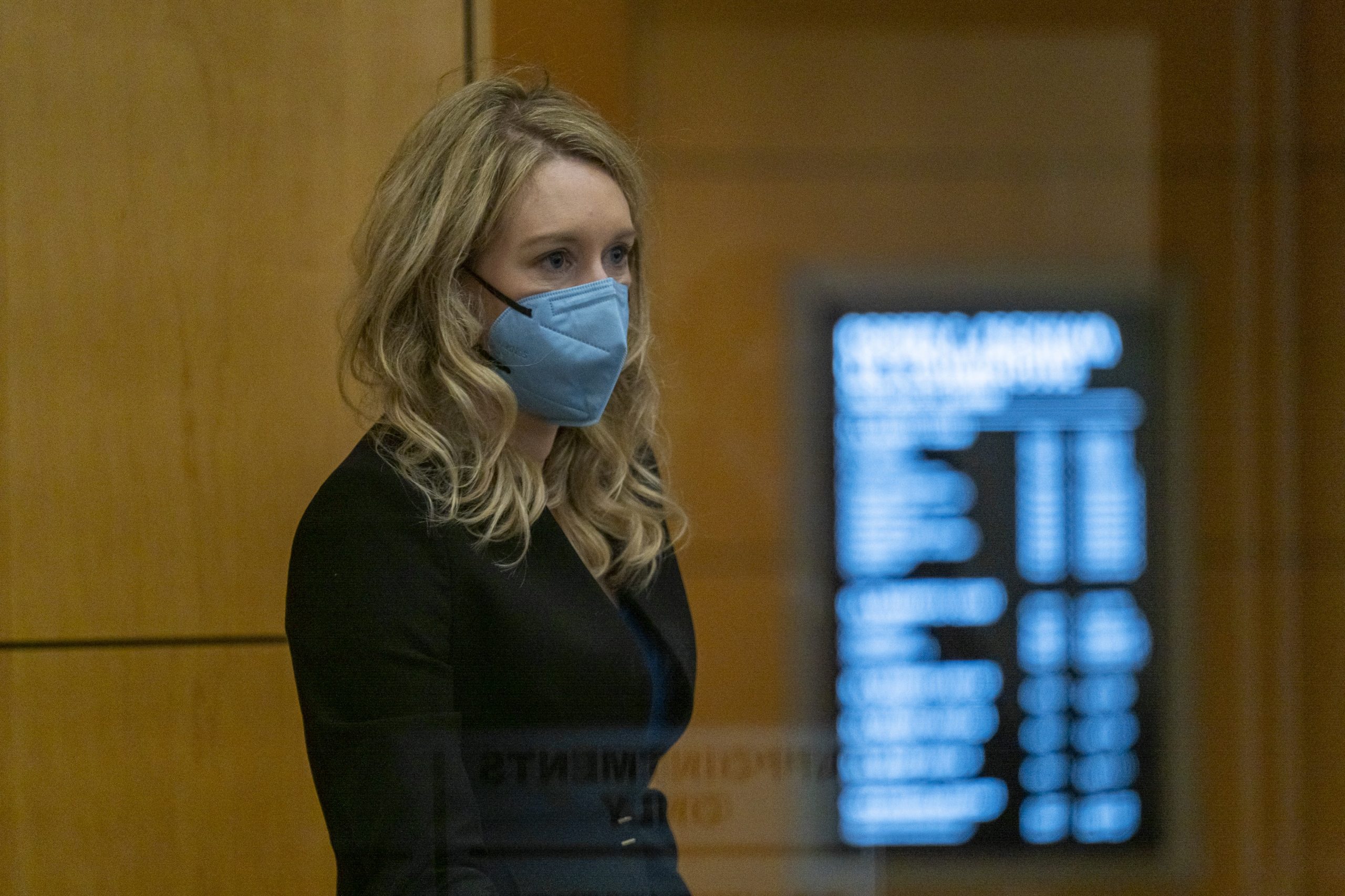At this point in her criminal trial, Theranos founder Elizabeth Holmes' best chance for acquittal is for the jury to believe that she was a puppet being controlled by her boyfriend, company president Ramesh “Sunny” Balwani. Yesterday, the prosecution attempted to pick apart that defense.
In Holmes' first several days on the stand, jurors heard about Balwani’s abusive behavior. He forced Holmes to have sex with him, prescribed her meals and schedule, and told her that she needed to “kill” herself to be reborn as an entrepreneur, Holmes testified. Balwani has denied the claims of abuse. When recounting various episodes, Holmes broke into tears several times. Based on her testimony and her contemporaneous notes submitted as evidence, it certainly sounds like it was a toxic relationship.
The question for the jury, though, is whether that influenced Holmes’ actions. Was she in control of Theranos? Did her relationship with Balwani make her oblivious to a fraudulent scheme? To be convicted of wire fraud, which Holmes has been charged with, a person’s participation must be both willful and knowing. Yesterday, the prosecution set out to make it clear that Holmes was both in control and aware that what she was doing was wrong.
Logos resurface
In one damning exchange, the prosecution returned to the Theranos reports that Holmes had doctored with pharmaceutical company logos. In earlier testimony, Holmes admitted to adding the logos herself, though she claimed her intentions were good. “This work was done in partnership with these companies, and I was trying to convey that,” she told the court.
But yesterday, the prosecution pressed her on the matter. Jurors saw contracts between Theranos and the pharmaceutical companies showing that the use of their logo was expressly forbidden without prior written authorization. Did she obtain that permission?
“I don’t know,” Holmes replied.
One report was actually authored by a drug company, GlaxoSmithKlein, though the original version didn’t contain the company’s logo, and the intended audience was clearly GSK and Theranos employees. Nonetheless, Holmes added a GSK logo and sent it to investors. But that’s not all—before she sent it to investors, someone at Theranos removed a line from the original saying that the "finger prick/blood draw procedure was difficult.” Was it Holmes?
“I don’t know,” she said.
The second damning exchange involved a legal review of Theranos’ marketing materials, including its website, in advance of the Walgreens rollout. Holmes was directly involved in the process, emails show.
“I haven’t quite worked my way through the whole website, but I’m worried,” an attorney emailed Holmes. “For example, every time you say ‘better’ without specifying what it is better than, you are making a comparative claim, at least to all market leaders. You must be able to substantiate these claims.”
Lawyers working on the review proposed a number of changes, including replacing “highest levels of accuracy” with “high levels of accuracy.” They also suggested to Holmes that her company provide evidence for certain claims. Many of those tweaks made it onto the website, but the original claims—including “highest levels of accuracy”—remained unchanged in materials she sent investors.
Holmes had been made aware that her exaggerated claims weren’t legally advisable, yet she continued to make them to investors.
Attempts to kill WSJ story
The prosecution also dove into Holmes and Balwani’s attempts to kill an investigation of their company by Wall Street Journal reporter John Carreyrou. They hired opposition research firm Fusion GPS to make a “killer package” about Carreyrou to “turn this into our story,” Holmes texted Balwani. When that didn’t work, she sent Rupert Murdoch, whose company owns The Wall Street Journal, an email about Carreyrou’s reporting. “I thought that were I in your shoes I would want to be in the loop,” she wrote.
Needless to say, appealing to Murdoch didn’t kill Carreyrou’s story, either. So when the exposé was published, Holmes went into damage-control mode. One stop on her tour was an appearance on the CNBC show Mad Money. “Every test we run on our laboratory can run on our proprietary devices,” Holmes said on the show.
Of course, that wasn’t remotely true. Though Theranos advertised that it could do around 1,000 tests in its labs, only 12 of them were run on its proprietary devices.
Holmes and Balwani also mounted a campaign to track down Carreyrou’s sources, hiring private eyes to follow them and lawyers to serve them with threatening cease-and-desist letters saying that “Theranos will consider all appropriate remedies, including filing suit against you.”
On the stand yesterday, Holmes denied that the letters were intended to threaten but were rather issued to protect Theranos’ trade secrets. (What constituted a trade secret in Holmes’ mind? According to previous testimony, Theranos’ use of third-party devices instead of its own.)
Text messages
Then there was the matter of Holmes’ relationship with Balwani. The prosecution had Holmes read texts between her and Balwani, asking her to confirm whether it was an example of Balwani acting lovingly toward her. Assistant US attorney Robert Leach also pointed out that, in the 12,000 text messages in evidence, the word “love” appeared 594 times.
(In a curious aside, Leach asked Holmes whether she was in another romantic relationship between 2010 and 2015 with someone who was not Balwani. She admitted that she was but said that “it was not a formal relationship.”)
It’s not clear how the jury will interpret Balwani’s alleged behavior.
“My gut is that it can be effective,” Jill Hasday, an expert on intimate partner violence and the law and a professor at the University of Minnesota Law School, told The New York Times, “because people have a lot of misconceptions about intimate partner violence, among other things that it’s constant.” In other words, abusive partners act lovingly sometimes; the fact that the word “love” appeared nearly 600 times doesn’t mean that Balwani wasn’t abusive. But the jury may not understand that nuance. The defense is expected to call as a witness Mindy Mechanic, an expert on intimate partner violence.
In control?
The prosecution stood on firmer ground when it got Holmes to admit that she was in charge of Theranos. "Ultimately all roads led to the CEO?” Leach asked her.
“Yes,” she replied.
“The buck stops with you,” he said.
“I felt that,” Holmes replied.
In another exchange, Leach established that Holmes had control over Theranos—she owned a majority of the stock, and the board and employees served at her whim.
“Sunny Balwani reported to you?” he asked.
“He did,” Holmes said.
“You could fire him at any time?” Leach asked.
“I could,” Holmes responded.


